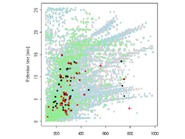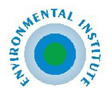You are here
Non-target screening techniques for environmental monitoring
It is increasingly recognised that the number of compounds measured today via target chemical analysis is not sufficient to provide an exhaustive overview of the status of our water bodies and that the application of non-target screening techniques is needed in order to detect the presence of harmful substances (including degradation by-products and metabolites) potentially overlooked. Also, at present there is no common procedure on how to prioritise substances identified within non-target screening efforts, in order to support the identification of the WFD River Basin Specific Pollutants (RBSPs). Another important limitation is that water samples cannot be stored in Environmental Specimen Banks (ESB), which limits the information that we can obtain from retrospective analysis of environmental samples.
NORMAN has a strong interest in promoting harmonisation of LC-HR-MS(MS) and GC-MS non-target-screening protocols and their integration with biological monitoring tools in connection with the use of structure elucidation and pollution pattern recognition tools (including those developed within NORMAN MassBank) to improve the identification of the RBSPs.
In 2013 a Collaborative Trial (CT) on non-target screening techniques on river water samples was organised by NORMAN under the lead of EI (Slovakia) in collaboration with UFZ (Germany), Eawag (Switzerland), UMEA (Sweden) and LfU (Germany), where a single, well‐defined sample was sent to many laboratories across Europe.
This was the first time such an exercise had been conducted in the area of environmental analysis. The trail itself was connected to the International Joint Danube Survey 3 (JDS3) organised by the International Commission for the Protection of the Danube River (ICPDR; August/September 2013) and the samples for the trial were sampled within the survey.
The main objective of this study was to draft recommendations by the NORMAN Association on the use of non-target and suspect screening for the identification of the RBSPs. Further to the CT participants discussed the results in a workshop organised by Eawag in Dübendorf, Switzerland on 15-16 September 2014. The main aim of the workshop was to discuss the results of the CT and get to an agreement on harmonised terminology, workflows and reporting formats, as well as a proposal for further actions to be promoted in the field of non‐target screening. More information about the trial and the following Non-target Screening workshop can be found here.
A rich programme of NTS actions has been part of the NORMAN Joint Programme of Activities over the past years, including the organisation of various collaborative trials, the launch of the NORMAN Suspect List Exchange initiative and SusDat database, the NormaNEWS (The Norman Early Warning System), the NORMAN Digital Sample Freezing Platform (NORMAN DSFP) and the integration of data from non-target screening into the NORMAN Prioritisation Framework for emerging substances and further initiatives are in the pipeline (NORMAN JPA 2018).
Workshop on Non-target screening for regulators on 25 October 2018 in Brussels.





























